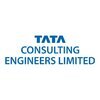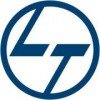Filter interviews by
Kaizer Construction Company Graduate Engineer Trainee (Get) Interview Questions and Answers
Kaizer Construction Company Graduate Engineer Trainee (Get) Interview Experiences
1 interview found
I applied via Naukri.com and was interviewed in Apr 2023. There were 2 interview rounds.

(3 Questions)
- Q1. What is the M20 Ratio ?
- Ans.
M20 ratio refers to the mix ratio of concrete where M denotes mix and 20 represents the compressive strength of concrete in N/mm^2 after 28 days.
M20 ratio is commonly used in construction for making concrete structures.
It consists of 1 part cement, 1.5 parts sand, and 3 parts aggregate.
For example, a mix of 1:1.5:3 means 1 part cement, 1.5 parts sand, and 3 parts aggregate.
The M20 ratio results in a concrete mix with a...
- Q2. 1:1.5:3 cement sand aggregate
- Q3. Types of Cement
- Ans.
Types of cement include Portland cement, white cement, rapid hardening cement, and low heat cement.
Portland cement is the most common type used in construction.
White cement is used for architectural purposes.
Rapid hardening cement sets quickly and is used in projects with tight deadlines.
Low heat cement generates less heat during hydration and is used in large concrete structures.
Interview Preparation Tips
- Construction
- cement
Top trending discussions






Interview questions from similar companies

Graduate Engineer Trainee (Get) Interview Questions & Answers
Worleyposted on 5 Dec 2024
I applied via campus placement at BRACT's Vishwakarma Institute of Information Technology, Pune and was interviewed in Nov 2024. There were 3 interview rounds.
Basic Aptitude Questions Reasoning & Verbal Ability
How is culture at IT Industries
(12 Questions)
- Q1. What are the tensile forces acts on material
- Ans.
Tensile forces are forces that stretch or pull materials apart.
Tensile forces act in the opposite direction of compressive forces
Examples of tensile forces include stretching a rubber band or pulling on a rope
Tensile strength is a measure of a material's ability to withstand tensile forces
- Q2. Write all formulas you know of Fluid Mechanics
- Ans.
Formulas in Fluid Mechanics
Bernoulli's equation: P + 0.5ρv^2 + ρgh = constant
Continuity equation: A1v1 = A2v2
Navier-Stokes equation: ρ(∂v/∂t + v∇v) = -∇P + μ∇^2v + ρg
Ideal gas law: PV = nRT
Poiseuille's Law: Q = πr^4(ΔP)/(8ηL)
- Q3. Laws of thermodynamics
- Ans.
The fundamental laws of thermodynamics govern the behavior of energy in systems.
First Law of Thermodynamics: Energy cannot be created or destroyed, only transferred or converted.
Second Law of Thermodynamics: The entropy of an isolated system will always increase over time.
Third Law of Thermodynamics: As temperature approaches absolute zero, the entropy of a system approaches a minimum value.
Examples: A car engine conve...
- Q4. What is Fouriers Law write its equation
- Ans.
Fourier's Law describes the flow of heat through a material.
Fourier's Law states that the rate of heat transfer through a material is directly proportional to the negative gradient of temperature and the area perpendicular to the direction of heat flow.
The equation for Fourier's Law is q = -k * A * (dT/dx), where q is the heat transfer rate, k is the thermal conductivity of the material, A is the cross-sectional area, ...
- Q5. Explain Iron Carbon phase diagram
- Ans.
The Iron-Carbon phase diagram illustrates the phases and microstructures of iron-carbon alloys as a function of temperature and composition.
Shows the phases of iron and carbon at different temperatures and compositions
Includes regions for austenite, ferrite, cementite, and pearlite
Critical points such as eutectic point and eutectoid point are marked
Used to predict the microstructure of steel based on composition and he
- Q6. Stress Strain Curve Explain
- Ans.
The stress-strain curve shows the relationship between stress (force applied) and strain (resulting deformation) in a material.
The curve typically consists of three main regions: elastic deformation, plastic deformation, and fracture.
In the elastic region, the material deforms elastically and returns to its original shape when the stress is removed.
The plastic region is where permanent deformation occurs, but the mater...
- Q7. Calculate SFD & BMD
- Ans.
SFD and BMD are calculated using equations of equilibrium and relationships between load, shear force, and bending moment.
Calculate reactions at supports using equations of equilibrium
Determine the shear force at different points along the beam by considering the applied loads and reactions
Calculate the bending moment at different points by integrating the shear force diagram
Plot the SFD and BMD based on the calculated...
- Q8. How to Calculate velocity of fluid flowing through pipe
- Ans.
Velocity of fluid flowing through a pipe can be calculated using the formula Q = A * V, where Q is the flow rate, A is the cross-sectional area of the pipe, and V is the velocity of the fluid.
Calculate the cross-sectional area of the pipe using the formula A = π * r^2, where r is the radius of the pipe.
Determine the flow rate (Q) of the fluid, which is typically measured in cubic meters per second (m^3/s) or liters per...
- Q9. What is Difference between entropy and enthalpy
- Ans.
Entropy is a measure of disorder or randomness in a system, while enthalpy is a measure of the heat energy in a system.
Entropy is a thermodynamic property that measures the amount of energy in a system that is not available to do work.
Enthalpy is a thermodynamic property that measures the total heat content of a system.
Entropy increases in irreversible processes, while enthalpy remains constant.
Entropy is denoted by S,...
- Q10. Draw Refrigeration Cycle Graph
- Ans.
The Refrigeration Cycle graph shows the process of cooling a space by transferring heat from inside to outside.
The cycle starts with the refrigerant entering the compressor as a low-pressure gas.
The refrigerant is compressed, raising its temperature and pressure, before entering the condenser where it releases heat to the surroundings.
After losing heat, the refrigerant becomes a high-pressure liquid and flows into the ...
- Q11. Draw vapour absorption cycle graph
- Ans.
The vapor absorption cycle graph shows the relationship between pressure, temperature, and enthalpy during the process.
The graph typically shows pressure on the y-axis and temperature on the x-axis.
It includes lines representing the various stages of the cycle such as evaporation, absorption, and desorption.
The enthalpy values at different points in the cycle can also be plotted on the graph.
Example: The graph will sho...
- Q12. Draw Rankine otto & diesel cycle graph
- Ans.
The Rankine, Otto, and Diesel cycle graphs are commonly used in thermodynamics to analyze different types of heat engines.
The Rankine cycle is used in steam power plants and consists of four processes: heat addition, isentropic expansion, heat rejection, and isentropic compression.
The Otto cycle is used in spark-ignition engines and consists of four processes: isentropic compression, constant volume heat addition, isen...
Interview Preparation Tips
- Strength of materials
- Thermodynamics
- Heat Transfer
- Fluid Mechanics

Graduate Engineer Trainee (Get) Interview Questions & Answers
Saint-Gobainposted on 27 Aug 2024
Technical Aptitude on java , .net , and sql
Generative Al . time was 8 minutes and 2 minutes for thinking

(1 Question)
- Q1. Core questions related to iron and steel making
Interview Preparation Tips

Graduate Engineer Trainee (Get) Interview Questions & Answers
Megha Engineering & Infrastructuresposted on 2 Jan 2024
I applied via Campus Placement and was interviewed in Dec 2023. There were 2 interview rounds.
How to be fast in solving?
(2 Questions)
- Q1. How to be confident while communication?
- Ans.
To be confident while communication, one must prepare, practice, and focus on body language and tone.
Prepare by researching the topic and understanding the audience
Practice by rehearsing the communication and seeking feedback
Focus on maintaining positive body language and using a confident tone
Use examples and anecdotes to support your points
Listen actively and respond thoughtfully to others
Be open to constructive crit
- Q2. How to be decipline while answering
- Ans.
To be disciplined while answering, one should stay focused, listen carefully, think before speaking, and provide clear and concise responses.
Stay focused and attentive during the interview
Listen carefully to the question being asked
Take a moment to think before responding
Provide clear and concise answers
Avoid rambling or going off-topic
Use examples or relevant experiences to support your answers
Interview Preparation Tips

Graduate Engineer Trainee (Get) Interview Questions & Answers
Tata Technologiesposted on 25 Apr 2023
I applied via Campus Placement and was interviewed in Mar 2023. There were 4 interview rounds.

The test was based on English, Quant, Numerical Ability, Reasoning and Core (Mechanical) syllabus.
(1 Question)
- Q1. 1) Tell me about yourself? 2) Which is your favourite subject? 3) 3-4 questions were asked on favourite subject. I said Thermodynamics so questions were on 0th Law, 1st Law, 2nd Law, COP, etc 4) What is th...
- Ans.
The interview covered topics such as personal background, favorite subject, thermodynamics, car terminology, material properties, stress-strain curve, and designing.
Personal background and favorite subject were discussed initially.
Thermodynamics was the favorite subject, with questions on various laws and concepts.
Car terminology was asked, including the terms for the front and back of the car, as well as the front and...
(1 Question)
- Q1. 1) Tell me about yourself 2) Family Background 3) Why should we choose you 4) 2 years plan, etc
- Ans.
I am a motivated and dedicated individual with a strong engineering background and a clear vision for my future.
Engineering background and qualifications
Motivated and dedicated
Clear vision and goals for the future
Ability to work well in a team
Strong problem-solving skills
Interview Preparation Tips

Graduate Engineer Trainee (Get) Interview Questions & Answers
Samsung E&Aposted on 3 Dec 2022
I applied via Campus Placement

(2 Questions)
- Q1. Designing of beams, steel designing
- Q2. SFD BMD AND ENVIRONMENT ENGINEERING
(2 Questions)
- Q1. About intership, LIKE HOW U TACKLE WITH UNEDUCATED WORKFORCE
- Q2. GRADES IS LOWER.. LIKE UR GRADES ARE LOWERING DAY BY DAY
Interview Preparation Tips

Graduate Engineer Trainee (Get) Interview Questions & Answers
Shapoorji Pallonji Groupposted on 19 Nov 2021
Interview Questionnaire
10 Questions
- Q1. 1. Tell me about yourself?
- Q2. 2.Why do you want to join us?
- Q3. 3.What job role do you expect?
- Q4. What is bleeding?
- Ans.
Bleeding is the process of removing excess air from a hydraulic system.
Bleeding is necessary to ensure proper functioning of hydraulic systems.
It involves removing air bubbles from the system by opening valves or using a vacuum pump.
Bleeding is commonly done in brake systems to ensure proper braking performance.
It can also be done in cooling systems to prevent overheating.
Bleeding is important to prevent damage to the
- Q5. What is segregation?
- Ans.
Segregation refers to the separation of different components or materials from a mixture.
Segregation can occur due to differences in size, density, or shape of the components.
Examples of segregation include the separation of oil and water in a mixture, or the separation of different sized particles in a granular material.
Segregation can have negative effects on the quality and consistency of a product, such as in the c...
- Q6. What is workability of concrete?
- Ans.
Workability of concrete refers to its ease of mixing, placing, and compacting.
Workability is a crucial property of concrete that affects its strength, durability, and appearance.
It is influenced by factors such as water-cement ratio, aggregate size and shape, and admixtures.
Concrete with good workability can be easily placed and compacted without segregation or bleeding.
Various tests such as slump test, flow test, and ...
- Q7. What is W/c ratio? How can we improve concrete without changing w/c ratio? ( Ans: By adding admixture, superplaticizer)
- Ans.
W/c ratio is the ratio of water to cement in concrete. Admixtures like superplasticizer can improve concrete without changing w/c ratio.
W/c ratio is a crucial factor in determining the strength and durability of concrete.
It is the ratio of the weight of water to the weight of cement used in the mix.
A lower w/c ratio means stronger and more durable concrete.
Admixtures like superplasticizer can improve workability, reduc...
- Q8. Questions based on Projects and Internship!
- Q9. Do you want to relocate?
- Q10. Higher studies?
Interview Preparation Tips

Graduate Engineer Trainee (Get) Interview Questions & Answers
Jacobs Engineering Groupposted on 28 Jun 2022
I applied via Naukri.com and was interviewed in Dec 2021. There were 2 interview rounds.
The test was based on aptitude section and core section(mine was chemical).
(2 Questions)
- Q1. Heat transfer phenomenon
- Ans.
Heat transfer is the movement of thermal energy from one object to another due to a temperature difference.
Heat can be transferred through conduction, convection, and radiation.
Conduction is the transfer of heat through a material without any movement of the material itself.
Convection is the transfer of heat through the movement of fluids.
Radiation is the transfer of heat through electromagnetic waves.
Examples of heat ...
- Q2. Fluid mechanics related formula and details
Interview Preparation Tips

Graduate Engineer Trainee (Get) Interview Questions & Answers
Alstom Transportationposted on 23 Dec 2021
I applied via campus placement at Vellore Institute of Technology (VIT) and was interviewed in Nov 2021. There were 4 interview rounds.
Interview Questionnaire
1 Question
- Q1. I was asked on my favourite subject in my domain (mechanical) and I was asked many basic questions from it.Then I was asked around various other concepts like heat transfer, strength of materials. I was al...
Interview Preparation Tips
Kaizer Construction Company Interview FAQs
Tell us how to improve this page.
Interview Questions for Popular Designations
- Graduate Apprentice Trainee Interview Questions
- Graduate Apprenticeship Trainee Interview Questions
- Graduate Trainee Interview Questions
- Graduate Engineer Interview Questions
- Production Graduate Engineer Trainee Interview Questions
- Graduate Student Interview Questions
- Graduate Apprentice Interview Questions
- Post Graduate Engineer Trainee [pget] Interview Questions
- Show more
Kaizer Construction Company Graduate Engineer Trainee (Get) Interview Process
based on 1 interview
Interview experience
Graduate Engineer Trainee (Get) Interview Questions from Similar Companies
|
Project Manager
6
salaries
| ₹7 L/yr - ₹12.5 L/yr |
|
Civil Site Engineer
5
salaries
| ₹1.5 L/yr - ₹2.8 L/yr |
|
Account Assistant
4
salaries
| ₹1.4 L/yr - ₹1.6 L/yr |
|
Junior Engineer
3
salaries
| ₹1.8 L/yr - ₹2.5 L/yr |
|
Civil Engineer
3
salaries
| ₹1.5 L/yr - ₹1.9 L/yr |

Larsen & Toubro Limited

Tata Projects

Shapoorji Pallonji Group

Hindustan Construction Company
- Home >
- Interviews >
- Kaizer Construction Company Interview Questions >
- Kaizer Construction Company Graduate Engineer Trainee (Get) Interview Questions






